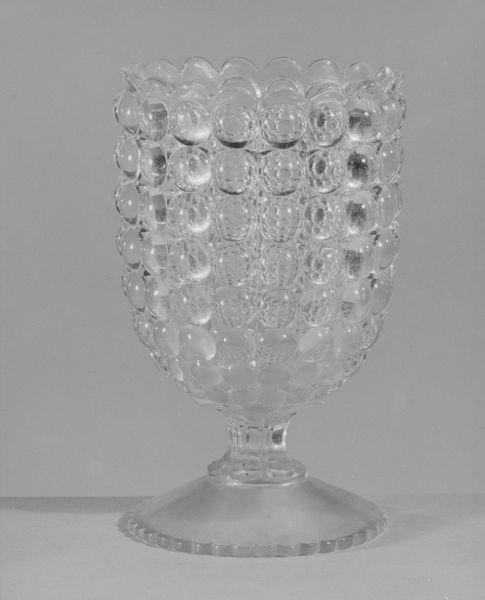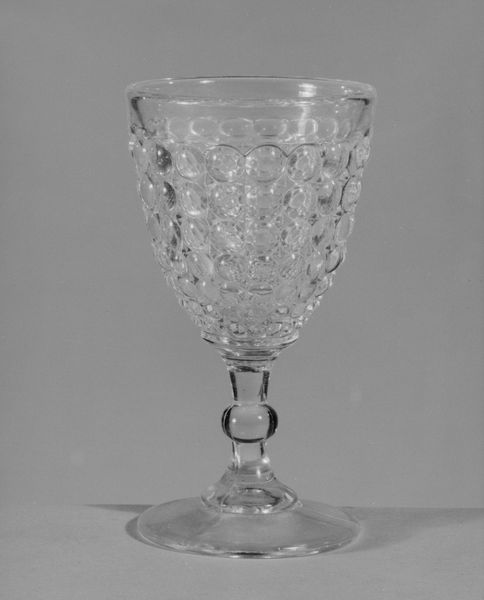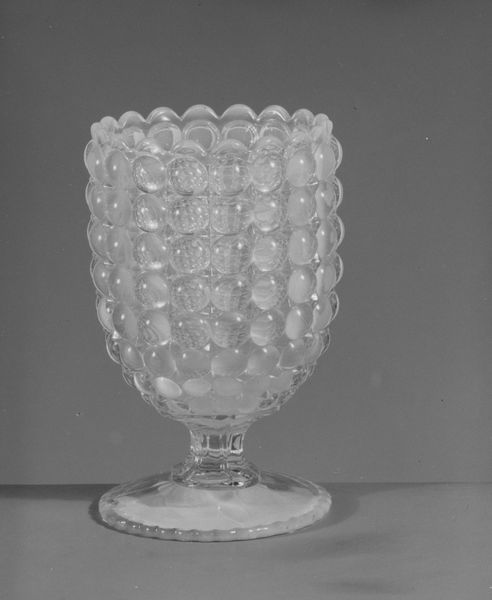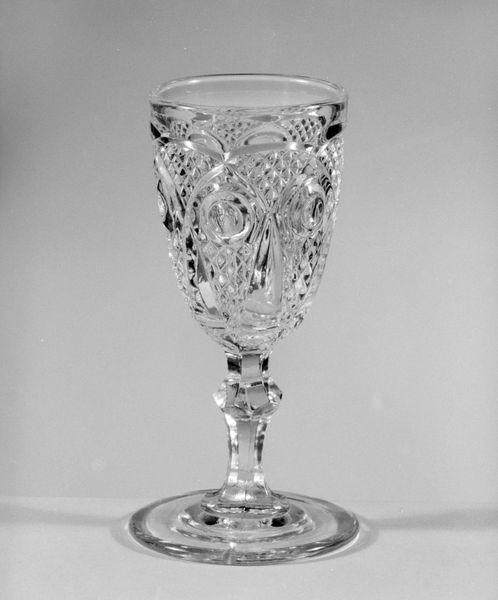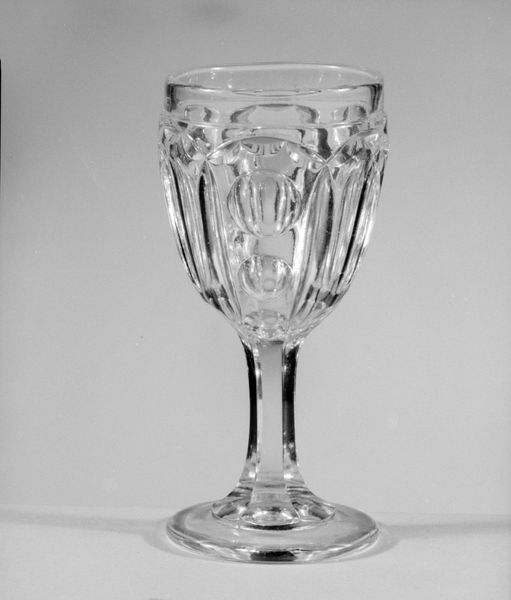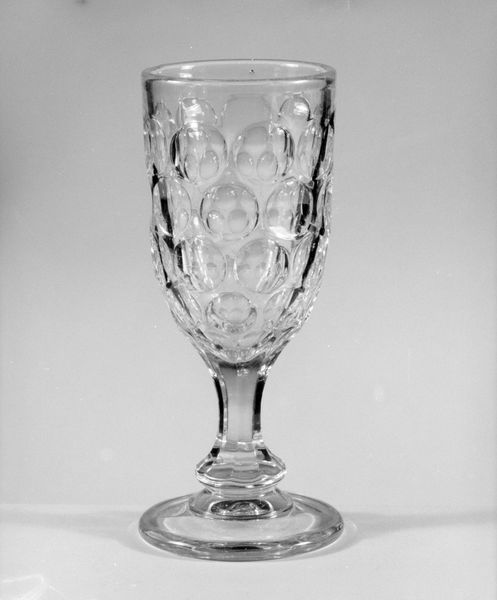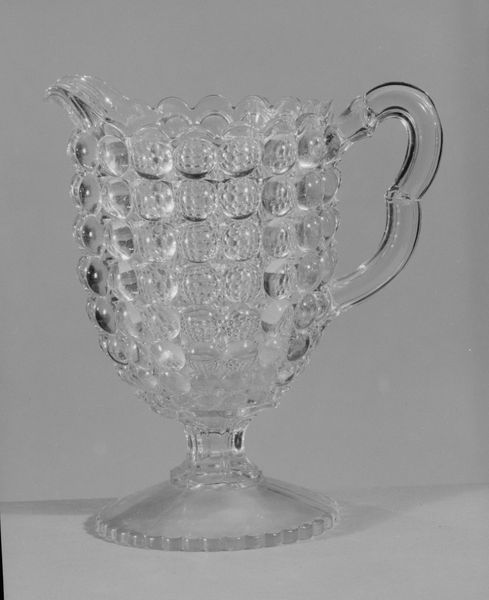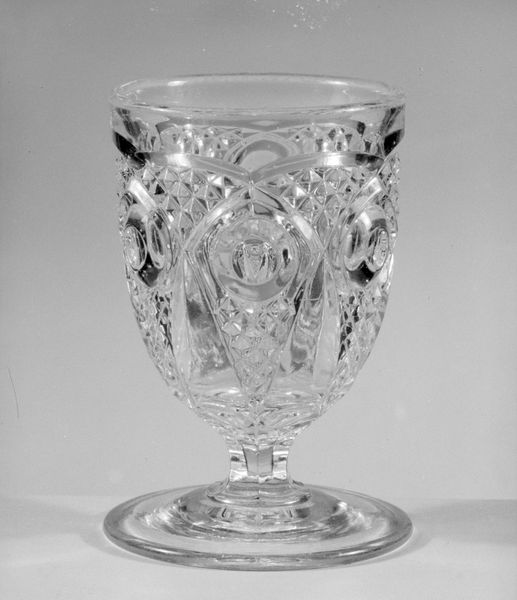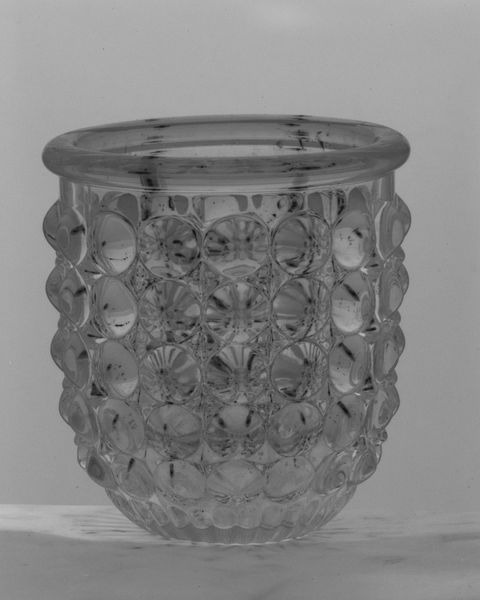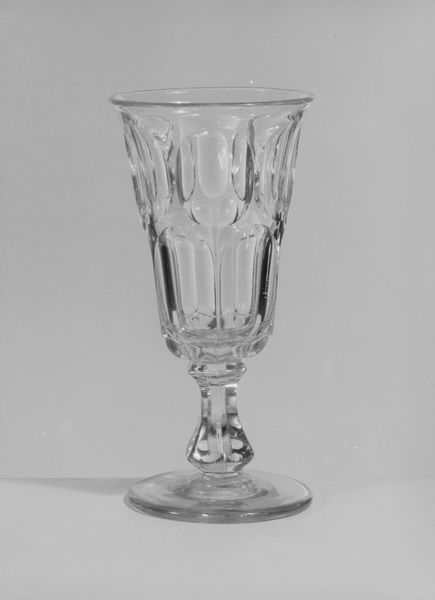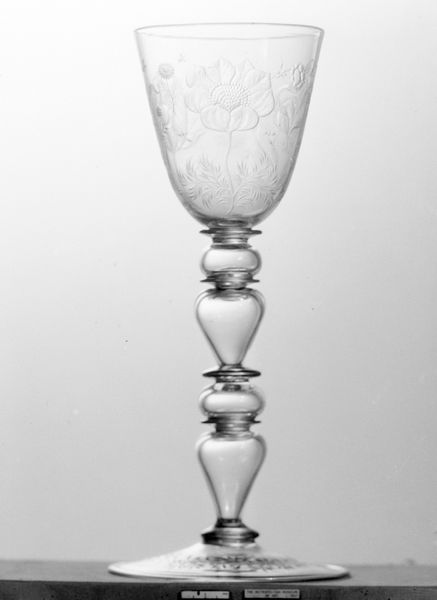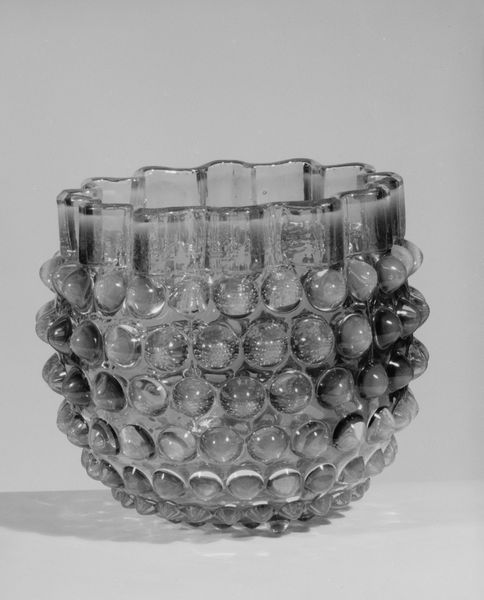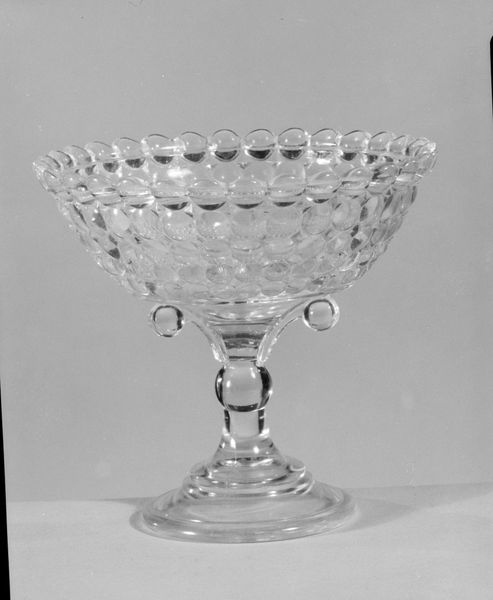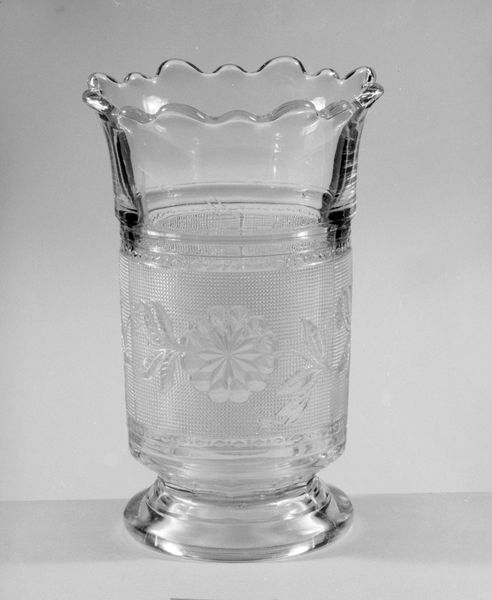
#
3d sculpting
#
3d printed part
#
jewelry design
#
virtual 3d design
#
sculptural image
#
3d shape
#
stoneware
#
macro shot
#
ceramic
#
metallic object render
#
united-states
Dimensions: H. 7 1/2 in. (19.1 cm); Diam. 4 in. (10.2 cm)
Copyright: Public Domain
Editor: Here we have the Celery Vase, created between 1885 and 1888 by Richards and Hartley Flint Glass Company. It's currently housed at the Metropolitan Museum of Art. The first thing that strikes me is the material itself, how the light plays off the pressed glass. It looks almost like bubbles clinging to the surface. What do you make of it? Curator: I'm drawn to the industrial processes involved in its creation. Pressed glass, like this, democratized access to luxury items. What was previously the realm of hand-blown, highly skilled artisans became something attainable by the rising middle class, achieved through mass production. Consider the labor involved, the factory settings, and the sheer volume produced. How does the context of mass production influence your understanding of the object itself? Editor: That's a fascinating point. I hadn't really thought about the labor aspect so directly. It does change my perception. Knowing it’s mass-produced cheapens it a bit for me in a way. So how do you balance that, recognizing the intensive labor behind the manufacturing process, with this aesthetic of luxury that it imitates? Curator: Precisely! This tension between mass production and luxury aspiration is central. The vase attempts to mimic the look of more expensive, hand-crafted glassware. The "bubbles" – the hobnail pattern – add a textural element, intended to elevate the perceived value. However, the very means of its production undercuts this illusion, laying bare the reality of industrial replication. The vase embodies the social stratification and evolving consumerism of the late 19th century United States. Does knowing that encourage a different kind of appreciation for it? Editor: It does. Seeing it as a social artifact rather than just a decorative object gives it much more depth. Thank you. Curator: My pleasure. It's through examining the object’s material and mode of production that we can better understand the broader cultural forces at play.
Comments
No comments
Be the first to comment and join the conversation on the ultimate creative platform.
